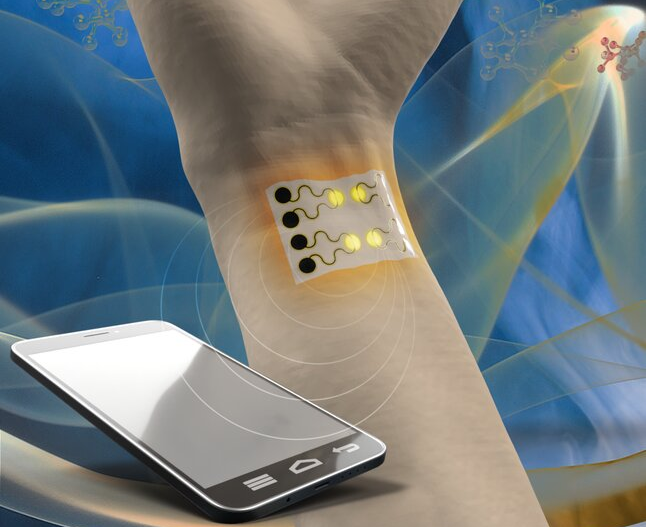
Image Credit: Cheng Lab/ Penn State
The team, led by Huanyu Cheng, assistant professor of engineering science and mechanics and materials science and engineering at Penn State, has established a sensor that surpasses those currently used. For example, existing wearable sensors require an external heater to function, as well as expensive and time-consuming lithography process to be produced.
The current innovation enlists a self-heating mechanism that enhances sensitivity. The researchers recognized that in current wearables, nanomaterials are favored for their high sensitivity due to their large surface-to-volume ratio. However, the problem with this is that nanomaterials can not easily be joined to an electrical source to allow signals to be read, and usually this results in the use of interdigitated electrodes.
To get around this problem, the team used a laser to pattern a highly porous single line of a graphene-like nanomaterial for the sensors which can currently detect both gas and biomolecules, and that in the future will be developed to also detect chemicals. Serpentine lines are added into the non-sensing part of the platform which are coated with silver, which can carry an electrical current, allowing the gas sensing part to heat itself, removing the need for an external heater. In addition, these serpentine lines allow the device to be flexible, an essential characteristic of a sensor to be used against the body in wearable devices.
The nanomaterials the team selected to work with were reduced graphene oxide, molybdenum disulfide, or a combination of both. Also, metal oxide composite of zinc oxide and copper oxide was used. The material selection reflected the types of materials that are currently most commonly used to create gas sensor materials.
Interest from the Military and Medical Device Companies
The US Defense Threat Reduction Agency has already expressed interest in developing this wearable sensor, primarily designed to track various signals of human health, to detect biological agents and chemicals, such as those that present a threat to security by attacking the nerves or lungs.
In addition, a medical device company has also expressed interest in further developing sensor innovation. Apparently, the medical company intends to develop the sensors to expand their functionality in tracking human health, giving them the capability to detect gaseous biomarkers from the human body that are associated with disease, as well as to detect dangerous pollutants that can affect the lungs.
Future Development Will See Sensors Used in Multiple Applications
It is entirely possible that in the near future the sensors will be used to detect nitrogen dioxide, which is emitted by vehicles and is known to pose a threat to human health. In addition, future uses of the sensors may include predicting acid rainfall by sensing the presence of sulfur dioxide and nitrogen dioxide, predecessors to acid rain. Finally, the sensors may be used to enhance the safety of industrial sites that work with harmful gases.
The next step will be involving the sensors to create high-density arrays that will have an improved signal, and allow the sensors to be more selective. Researchers are also considering incorporating machine learning into the sensors to help them recognize specific signals that are related to the presence of individual molecules, further enhancing their sensitivity and increasing their potential applications. Further researcher over the coming years is likely to result in the sensors entering the commercial market in a relatively short time frame.
Disclaimer: The views expressed here are those of the author expressed in their private capacity and do not necessarily represent the views of AZoM.com Limited T/A AZoNetwork the owner and operator of this website. This disclaimer forms part of the Terms and conditions of use of this website.